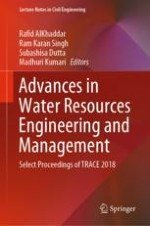2020 | OriginalPaper | Chapter
Electrocoagulation as an Eco-Friendly River Water Treatment Method
Authors : Khalid S. Hashim, Rafid AlKhaddar, Andy Shaw, P. Kot, Dhiya Al-Jumeily, Reham Alwash, Mohammed Hashim Aljefery
Published in: Advances in Water Resources Engineering and Management
Publisher: Springer Singapore
Activate our intelligent search to find suitable subject content or patents.
Select sections of text to find matching patents with Artificial Intelligence. powered by
Select sections of text to find additional relevant content using AI-assisted search. powered by
